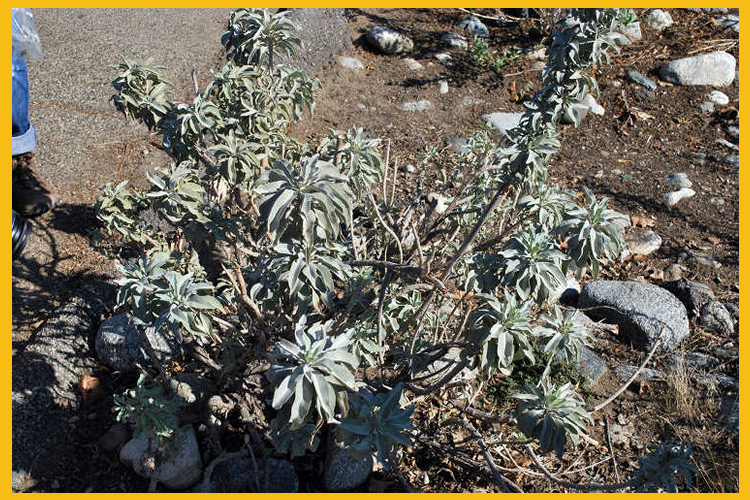Hotline Question May 2021
Question: We removed several large eucalyptus trees and planted some bushes to replace them. Some of the bushes are doing fine but others have died. What do you think is happening?

Answer:
You should be able to grow a variety of shrubs in the soil where eucalyptus trees previously grew if the stumps and large crown roots were removed.
If you planted two or more different kinds of shrubs you may be able to discern a pattern from those that died. It may be that one type of shrub is not well adapted to your soil or other environmental conditions. Following are a few other possible reasons for the uneven survival of your newly planted shrubs. Soil conditions in a yard can vary from one location to another and one important factor is drainage. The shrubs that died may have been planted where there was poor internal soil drainage. Roots need water but they also need oxygen to live and grow. If water stands in a planting hole or drains away too slowly after rain or irrigation, the plant roots may drown or succumb to disease.
You can prevent this from occurring by performing a simple drainage test before you plant. Dig a hole at least a foot deep and fill it with water. Let the water drain out, then fill the hole again with water to find out how quickly it drains when the soil is saturated. If water drains out very slowly or remains in the hole the next day, select another planting site, if possible, with better drainage. Digging a larger hole will only create a larger pond if the soil at the bottom of the hole does not drain well. If you want to plant on a poorly drained site, elevate the plants by creating a gently sloping mound that is at least a foot higher than the native grade. Another option is planting in a raised planter bed filled with better soil.
The shrubs that died may not have been irrigated properly. Newly planted shrubs and trees must be watered often enough to keep the root ball moist but not constantly saturated. A newly planted shrub’s root ball is its only source of moisture until new roots grow into the native soil. It may take several weeks or months for new plants to become well established.
To ensure adequate moisture for new plants, water must be applied at the base of the stem so it will wet the entire root ball. To help retain water, you can create a temporary irrigation basin a few inches deep by forming a circular ridge of soil around the plant at the outer edge of the root ball. If sprinklers are used to irrigate new plants, they should wet the top of the root ball and be run long enough for water to penetrate through the root ball. If drip emitters are used, emitters can initially be placed next to the stem on opposite sides of the plant. When the plants are well established, move the emitters a little beyond the root ball to avoid possible crown rot.
The eucalyptus you removed may have depleted the soil of some essential plant nutrients. Established shrubs and trees usually only require nitrogen but new plants may benefit from a complete fertilizer containing nitrogen (N), phosphorus (P) and potassium (K). A general-purpose fertilizer with these nutrients can be scattered evenly over the area to be planted according to label directions and mixed into the top 6-12” of soil.
Improper application of fertilizer can damage or kill new plants. No manure or soluble fertilizer should be placed in the planting hole. A high concentration of soluble salts in a planting hole can burn roots and kill the plant. If desired, a slow-release fertilizer can be used on new plants according to label directions. If a soluble fertilizer is used apply it lightly around the plant a few inches from the root ball, then water thoroughly to dissolve the fertilizer and carry it into the soil. Applying too much soluble fertilizer on top of the root ball can damage the plant.
The large mass of tree roots left in the soil and any plant debris (foliage and stems, sawdust or chipped wood) may initially slow the growth of your new shrub. The large amount of organic matter from the trees provides a source of food for soil fungi and bacteria. These microorganisms absorb nitrogen and other nutrients from the soil as they grow and may temporarily create a nutrient deficiency for new plants. If the growth on new plants appears yellowish green or stunted, the condition can be corrected by periodically applying a fertilizer containing nitrogen to supply the needs of the plants and soil microorganisms. As the dead roots and other organic matter break down over time, the nutrients they contain will be released back into the soil for plants to absorb.
Mushrooms which are the fruiting bodies of wood decay fungi may periodically appear in the area where the trees were removed. They will not hurt your new shrubs but may be toxic and should not be eaten. If the mushrooms pose a hazard to children or pets, carefully remove the mushrooms and put them into the trash.

